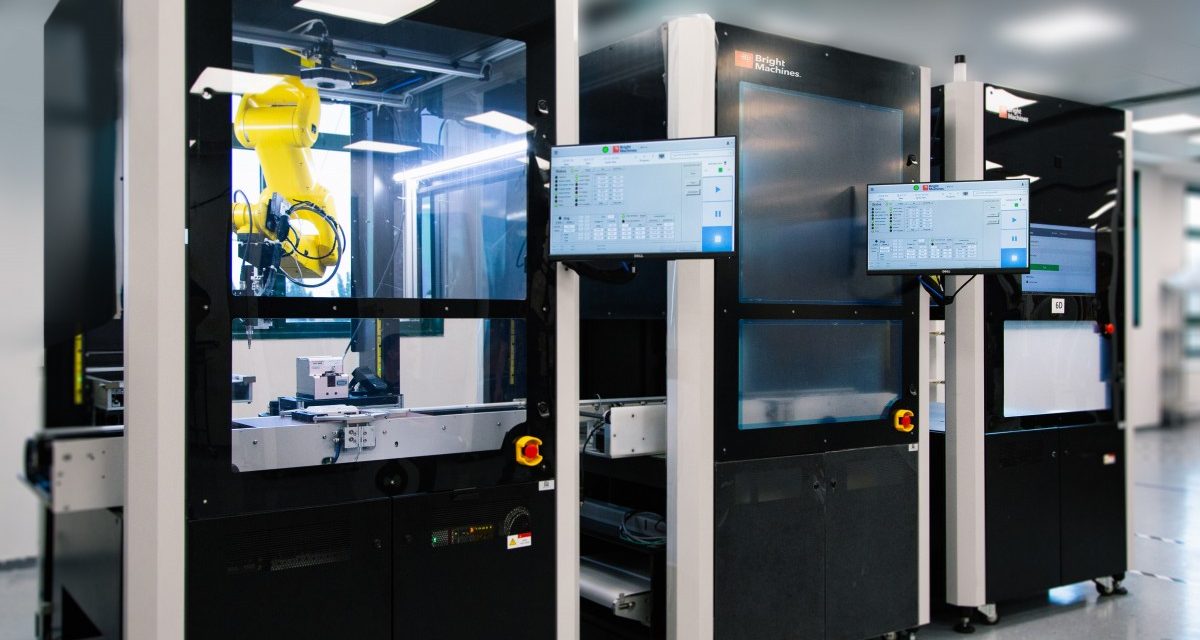Why companies urgently need to rethink their automation strategies

By Amar Hanspal, CEO, Bright Machines
 All around us – in our homes, in our cars and in our hands – products are getting smarter. They interact with us – respond to our touch and our voice and adapt to our needs. They are responsive, flexible and intelligent.
All around us – in our homes, in our cars and in our hands – products are getting smarter. They interact with us – respond to our touch and our voice and adapt to our needs. They are responsive, flexible and intelligent.
The same, unfortunately, cannot be said about many of the factories that make these products.
Despite all the investment in automation and digital connectivity, many factories are still populated by hundreds of workers engaged in repetitive tasks. Processes are frequently managed using analog, paper-based methods. Factories like this are not set up to rapidly adapt to customer needs or implement agile processes that continuously address quality issues.
In addition, manufacturing’s reliance on low-cost labor markets to address capacity and capability issues is reaching its limits. Reports show that labor turnover can be as high as 30%. There is also a growing need for products to built on-demand, closer to the end-customer and customized to their needs.
Scaling Automation
Automation clearly marks the next big leap for manufacturing and is the key to unlocking more capacity and improving capability in factories. Of course, the idea itself isn’t new to manufacturing, but its deployment has been limited due to several significant barriers.
Today, machines must be carefully calibrated, meticulously configured by hand and managed individually. As a result, this first-generation of automation costs too much, takes too long to install, and perhaps most important, is still dependent on a limited group of experts, making it difficult to scale or replicate.
The only way to solve the inherent problems with automation – and unlock its full value in factories – is to apply software to the problem.
Software is driving a factory reinvention
With Software-Defined Manufacturing, individual machines are connected to a software layer that configures, monitors and manages machines and their operations, creating programmable and autonomous factories.
A software-defined approach to manufacturing automaton is poised to transform the industry for three distinct reasons:
- It makes it easier to configure, replicate and scale automation, changing the economics, speed and flexibility of automation.
- It introduces intelligence to the manufacturing process, effectively adding eyes and brains to the muscles of the ordinary machines on the production floor. For the factory, this is a big deal. By adding intelligence to machines, software can make better products in smaller, more sustainable factories, while amplifying human capacity. This is fundamental to reimagining the factory floor.
- It digitizes factory operations, making them more transparent and accessible, making it easier for everyone to interact with the actual manufacturing operation.
A democratization of innovation
Today, it’s difficult for an engineer or designer to figure out how to get a physical product made. It frequently feels like a black art – from how one goes about finding a factory to make the product, to getting the NPI process right, to scaling up the production to the right volumes and to getting the yield and throughput to the right level.
By increasing transparency and access, AI-powered software completely changes the dynamics of manufacturing. By making the process of building physical goods easier, faster and smarter, software therefore has the incredible power to speed up product innovation. Anyone can now build anywhere, on-demand – and at a lower cost.
Just imagine how many new products would exist if manufacturing were simpler, more affordable and accessible. Entrepreneurs would face far fewer limitations than they do today, and consumers would benefit from the proliferation of product innovation.
This democratization of innovation, I believe, will be the true advantage of Software-Defined Manufacturing – and the one that will ultimately provide the incentive that companies need in order to rethink their current automation strategies.













